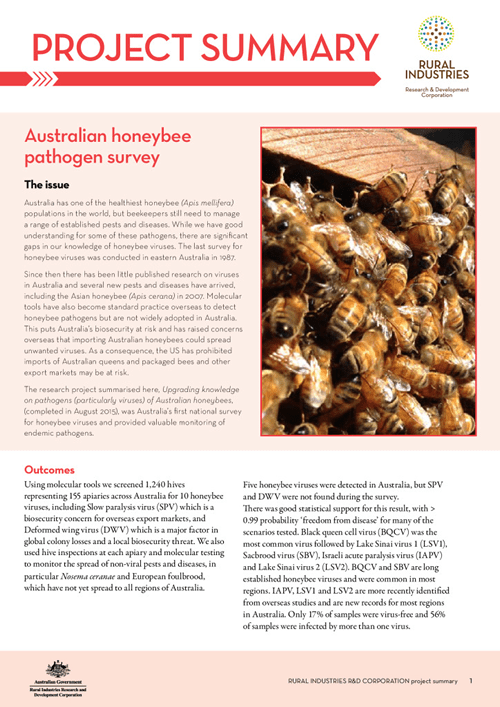Australia has one of the healthiest honeybee (Apis mellifera) populations in the world, but beekeepers still need to manage a range of established pests and diseases. While we have good understanding for some of these pathogens, there are significant gaps in our knowledge of honeybee viruses. The last survey for honeybee viruses was conducted in eastern Australia in 1987.
Since then there has been little published research on viruses in Australia and several new pests and diseases have arrived, including the Asian honeybee (Apis cerana) in 2007. Molecular tools have also become standard practice overseas to detect honeybee pathogens but are not widely adopted in Australia. This puts Australia’s biosecurity at risk and has raised concerns overseas that importing Australian honeybees could spread unwanted viruses. As a consequence, the US has prohibited imports of Australian queens and packaged bees and other export markets may be at risk.
The research project summarised here, Upgrading knowledge on pathogens (particularly viruses) of Australian honeybees, (completed in August 2015), was Australia’s first national survey for honeybee viruses and provided valuable monitoring of endemic pathogens.





